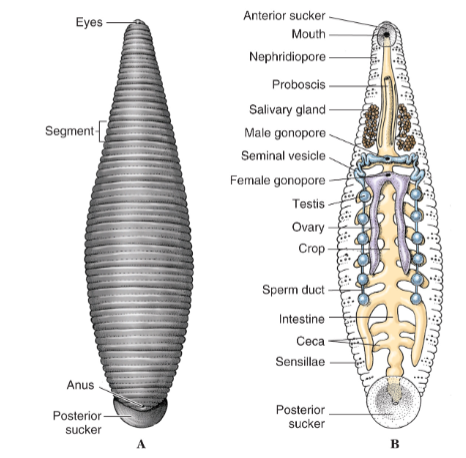Annelids
1/11
There's no tags or description
Looks like no tags are added yet.
Name | Mastery | Learn | Test | Matching | Spaced |
|---|
No study sessions yet.
12 Terms
Annelids are what kind of protosomes?
Lophotrochozoan
2 major clades in Annelids:
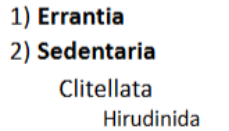
Our Annelid Classification:
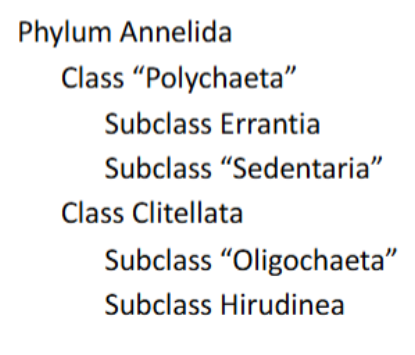
Body Plan
Nereis a good example (errant polychaete)
Metamerism (segmentation)
Head of prostomium, peristomium
Tail of pygidium
Parapodia (biramous)
Setae/Chaetae
closed circulatory system
dorsal and ventral blood vessels, “hearts”
ventral nerve cord
metanephridium
cutaneous/gill respiration
sexual reproduction
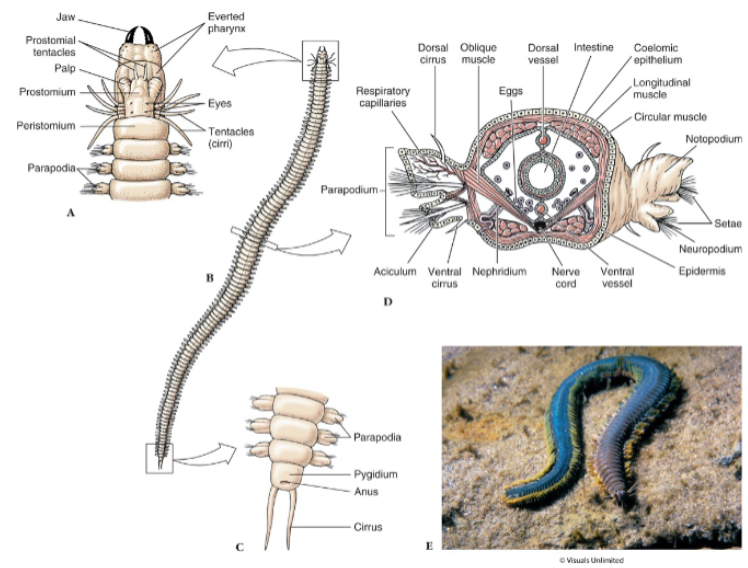
Metamerism
each segment (“somite”) is its own hydrostatic skeleton • Septa between them • longitudinal and circular muscles act as antagonists • parapodia and setae used for locomotion & feeding
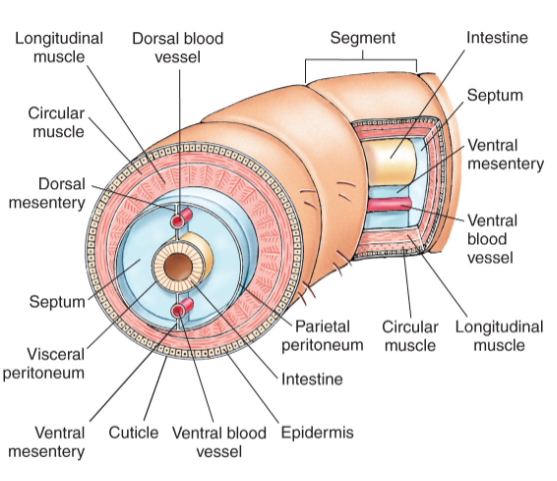
Errant Polychaetes (Subclass Errantia)
Includes: • Nereids (clam worms) • Polynoids (scale worms)
Predatory • senses well-developed • eversible pharynx with jaws
Sedentary Polychaetes (Clade Sedentaria & Subclass “Sedentaria”)
Tubeworms • e.g., featherduster worms (sabellids) • live in parchment tube • filter feed with radioles
Sedentary Polychaetes
Tubeworms • e.g., christmas-tree worms (serpulids) • live in calcareous tube
Amphitrite (terebellid) • “spaghetti worm” • tentacles extend across sand, sweep up food
Arenicola (lugworm) • Abarenicola
Echiurans (spoon worms) • proboscis with “gutter”
Sipunculans (peanut worms) • “introvert”
Pogonophorans (Siboglinids) • “Beardworms” or vestimentiferan tubeworms • Deep sea
Pogonophorans (Siboglinids) • “Beardworms” or vestimentiferan tubeworms • Deep sea, near “black smokers” • trophosome harbors chemoautotrophic bacteria
Class Clitellata: Subclass “Oligochaeta” (in clade Sedentaria)
freshwater & terrestrial • earthworm (Lumbricus) and blackworm (Lumbriculus) are good examples • Named for clitellum • Have few (oligo-) setae (-chaeta)
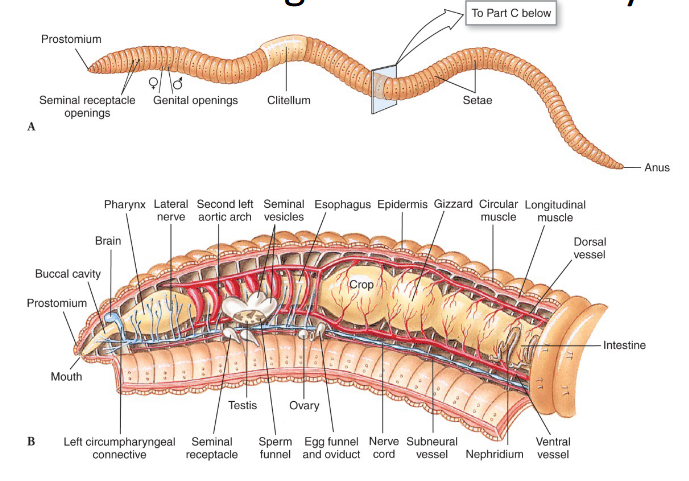
Clitellata: Oligochaete Anatomy • nervous system
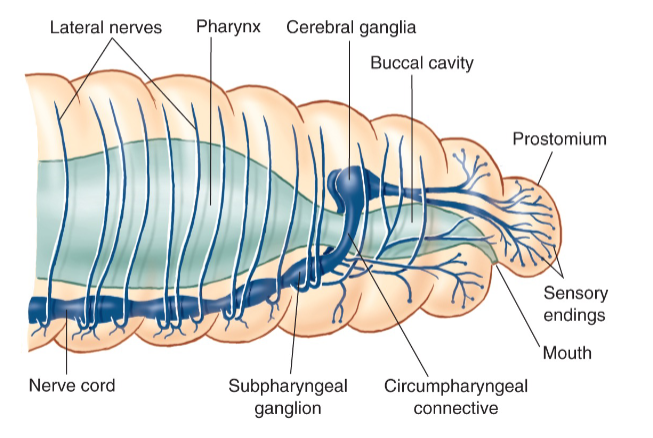
Clitellata: Oligochaete Reproduction

Class Clitellata: Subclass Hirudinea (in clade Sedentaria)
Leeches! • Freshwater & Terrestrial • carnivorous & parasitic
• Medical leeches (Hirudo medicinalis)
